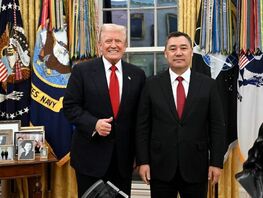Draft requirements for the location of Tamchy Special Financial Investment Territory (SFIT) have been submitted for public discussion. The document was prepared by the Ministry of Construction, Architecture, Housing and Communal Services of Kyrgyzstan in compliance with the SFIT law and previously issued government instructions. Developing these requirements is the first step before creating a master plan for the new zone, which will determine the overall development, layout, utility infrastructure, and land use regime.
The Tamchy SFIT is proposed to be established on the shore of Issyk-Kul lake as a territory with a special legal regime for technology, financial, and service companies. The draft requirements are intended to establish the basic rules governing the development of the territory: from zoning and facility placement to environmental restrictions and utility preparation. According to the initiators, this will help to avoid chaotic development, ensure predictability for investors, and ensure transparency in the decisions of the zone’s governing body.
The document proposes dividing the future territory into functional zones. The project involves the creation of a financial and business center, tourism and recreation clusters, logistics sites, utility zones, and service infrastructure.
The shoreline is to remain natural: the draft explicitly prohibits altering the natural landscape or disturbing the lake’s coastal ecosystem. The placement of high-risk facilities will only be allowed in compliance with sanitary buffer zones and industrial safety requirements.
A separate set of requirements concerns utility and transportation support.
Future development must be connected to electricity, gas, heat, water, and storm drainage systems, with backup options for critical networks.
An important condition stipulates the zone’s connectivity with Issyk-Kul Airport, major roads, and the region’s logistics routes. The need for energy-efficient solutions and climate resilience of facilities is emphasized.
Environmental standards make up a significant portion of the draft. All development projects must undergo environmental impact assessment (EIA). The managing company will be required to confirm the availability of sufficient water resources, ensure wastewater treatment to regulatory levels, and create a «green framework» — a system of plantings, public green spaces, and natural buffers. Continuous monitoring of water resources, soil condition, air quality, and zoning compliance will be mandatory.
A special regime will be in place during the transition period.
Before the internal regulations of the SFIT are officially adopted, decisions on project placement and construction will be made based on documents prepared by experts appointed by the managing company. During this period, state inspections, expert reviews, and oversight activities will not apply — a measure authorities believe will accelerate infrastructure launch and attract the first residents.
Once the SFIT’s full regulatory framework is in place, the territory will switch to a system of ongoing monitoring. This will include control over the load on engineering networks, compliance with environmental and height restrictions near the airport, water use limits, and the implementation of environmental protection plans.






